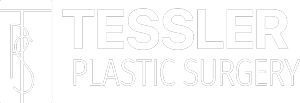A common misconception is that plastic surgery and cosmetic surgeries are one and the same thing. These professions practice similar medical specialties, but also do have their differences in terms of their training, specialty, and accreditation. This article aims to provide clarification so you can always choose the right surgeon for your procedure.
Cosmetic vs Plastic Surgery
The term plastic means to shape or create a new shape in Greek. There are several fields of plastic surgery that are specialized in restoring function in a person’s body, including after injuries or diseases such as cancer.
Plastic surgery can be seen as a sub-specialty of surgery that focuses on the structure of the body. Professionals in this field aim to restore normal function and appearance. This explains why plastic surgeons are the go-to specialist for patients who are suffering from traumas, burns, birth disorders, and the effects of disease (e.g. mastectomy). To a large extent, one could accurately say that plastic surgery and reconstructive surgeries are one and the same thing.
Plastic surgery also has its own aesthetic sub-specialty that focuses on reshaping different areas of the body in order to create a more pleasing appearance.
Some examples of plastic surgery procedures include the following:
- Cosmetic surgery procedures for cleft palate and extremity defects – this includes upper extremity reconstruction
- Breast Reconstruction
- Surgery to repair burns
- Hand surgery
- Scar revision surgery for complex trauma surgery
Generally speaking, cosmetic surgery is a sub-specialty of plastic surgery. This refers to procedures that are performed with the intent of enhancing aesthetics. The focus here is on the cosmetic enhancement of a patient’s appearance. Surgeons may accomplish this by restoring symmetry, correcting shape issues, sculpting various areas of the body, or removing excess/unwanted tissue. Cosmetic procedures treat areas of the body that are healthy and are considered to be elective in nature. These treatments can be administered by professionals from different medical specializations, including dermatologists and plastic surgeons.
Some examples of cosmetic surgery include the following:
- Breast augmentation, breast lifts, and breast reduction.
- Procedures that enhance a facial appearance such as facelifts, eyelid surgery, brow lift, neck lift, rhinoplasty, chin lifts, or lip augmentation.
- Body Contouring Procedures: Sculpting, Lifting & Liposuction, Gynecomastia, etc.
- Nonsurgical options such as Botox® and dermal fillers for facial rejuvenation.
Differences in Terms of Training and Certification
Board Certified plastic surgeons and surgeons who specialize in cosmetic surgery are trained in two different ways.
To become a board-certified plastic surgeon, one must:
Graduate from an accredited medical school
Complete a competent residency training:
- a minimum of 6 years in a program accredited by the Accreditation Council for Graduate Medical Education
- at least 5 years in a program accredited by the Royal College of Physicians and Surgeons of Canada.
- include all areas of surgery with at least three years devoted just to plastic surgery.
Pass written and oral examinations on all types of plastic surgery including cosmetic, reconstructive, craniomaxillofacial, and surgery of the extremities.
Cosmetic surgeons need the following to be accredited by the American Board of Cosmetic Surgery:
- A full year of exclusive training in cosmetic surgery
- A minimum of 300 individual cosmetic procedures (on the face, body, or breasts)
- Additional comprehensive training in non-surgical procedures such as laser resurfacing, BOTOX & fillers, and skin care
- Pass a detailed and rigorous oral and written exam that covers all areas of cosmetic surgery.
Which professional should I work with
Cosmetic surgeons can handle diverse surgical and non-surgical procedures. Plastic surgeons, on the other hand, can handle both cosmetic and reconstructive procedures. The important thing is to ensure that the surgeon you choose to work with has the relevant training and is certified by the relevant board.

